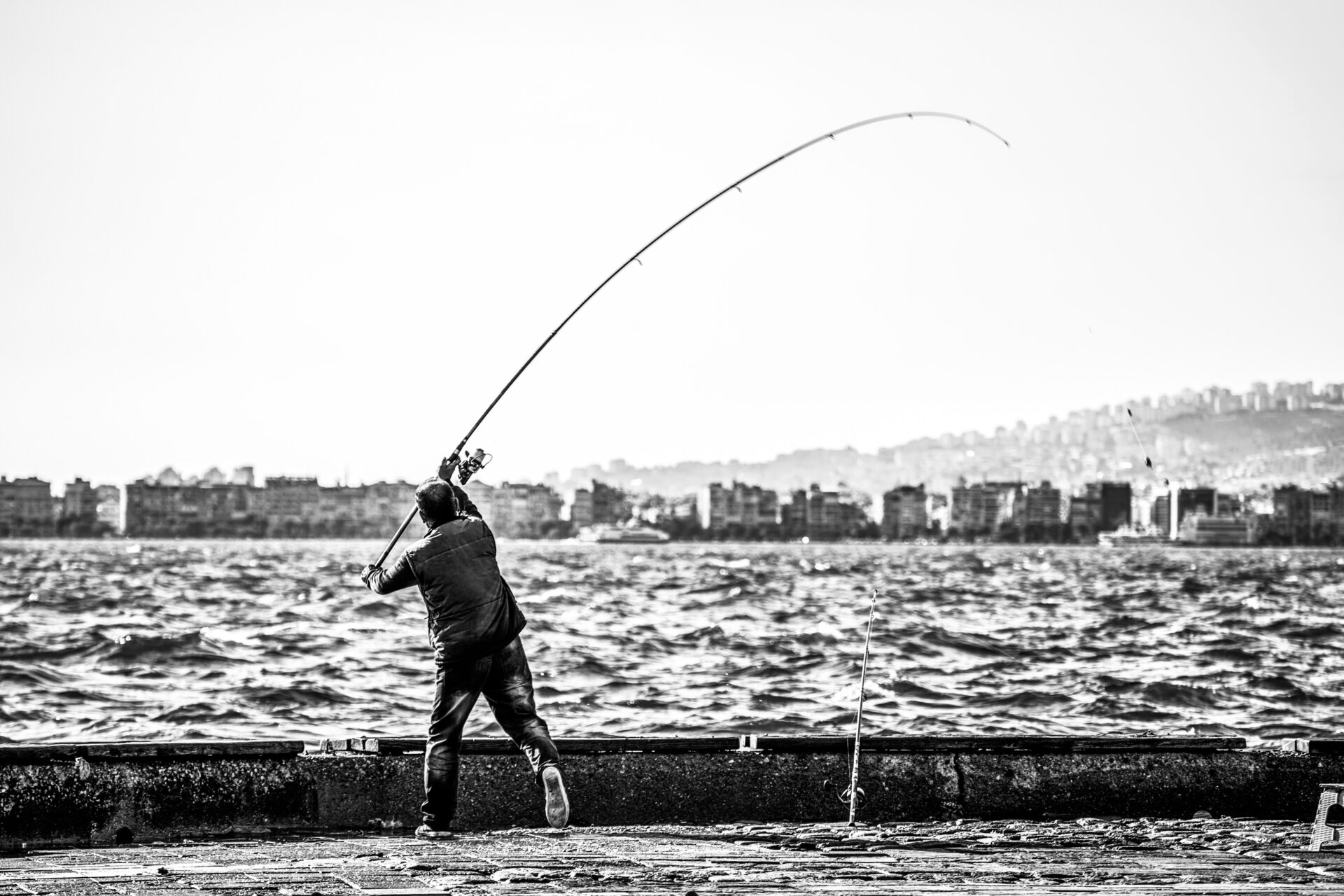Fishing for trout in fast-moving streams can be an intimidating experience for beginner anglers. It’s easy to be overwhelmed by the rushing water, and the fast-moving trout can be hard to catch. However, with the right techniques and knowledge, it is possible to be successful at fishing for trout in fast-moving streams. In this article, we’ll cover the basics of trout fishing in fast-moving streams, from understanding the environment to getting the right equipment. With the help of these tips, you’ll be well on your way to catching that perfect trout.
Identifying the Right Streams
Fishing in fast-moving streams can be a challenging and rewarding experience. It’s important to understand how the fast currents affect trout before you head out on the water. Knowing the conditions of the stream will help you to identify the right streams for fishing for trout.
Check the Currents
You’ll want to check the currents of the stream before you start fishing for trout. Fast-moving streams usually have more oxygen in the water, which the trout appreciate. However, there can be too much current for effective trout fishing in some sections. Look for areas with slower currents and bubbling pools of water, where trout will congregate.
Choose the Right Location
Once you have identified a stream with slower currents and bubbling pools, you can start to look for the best location to cast your line. Look for areas where the current is slower, as trout prefer to rest in calmer water. When trout feel threatened, they will hide beneath rocks or logs, so you may want to look for these same spots when fishing in fast-moving streams.
Look for Trout’s Food
Trout are carnivorous, so they are always on the hunt for food. Look for areas where there is an abundance of food sources, such as invertebrates, larvae, or small fish. These areas will be prime spots for catching trout as they come out to feed.
Consider the Environment
When fishing for trout in fast-moving streams, it’s important to be aware of both the fish and their environment. Make sure you don’t disturb the habitat of any nearby fish, as it can scare them away. This can also cause damage to the stream’s ecosystem, so it’s important to be mindful of your actions.
Be Prepared for All Conditions
Before you head out for a day of trout fishing in fast-moving streams, make sure you’re prepared for all possible conditions. Bring a variety of lures, hooks, and tackle so you can adjust your fishing strategy based on the current and the environment. Be sure to check the weather forecast and dress appropriately as well.
Stay Safe on the Water
When fishing in fast-moving streams, safety should always be your top priority. Be sure to wear a life vest, especially if you’re wading in the water. Always pay attention to your surroundings and be aware of potential hazards. You should also bring a first-aid kit, just in case.
By doing your research and being prepared, you can successfully fish for trout in fast-moving streams. Identifying the right streams and locations, understanding the environment and currents, and keeping safety in mind will ensure you have a successful and enjoyable day of fishing.
Understanding Trout Habits
Trout are cold-water fish and will typically live in and around streams and rivers that have colder temperatures and high levels of oxygen. If you’re looking to catch trout, it’s important to understand their habits to increase your chances of success. In fast-moving streams, trout will usually feed and spend most of their time near the surface. As such, the best way to fish for trout in fast-moving streams is to use top water lures.
Know the Best Lures for Trout
Top-water lures work well for trout because they imitate the small insects and larvae that trout feed on. Spoons, spinners, and crankbaits are all effective lures for trout in fast-moving streams. In addition, small spinners and spoons with a single hook can be used when the water is clear and turbulent. When using spinners or spoons, keep your casts short and accurate.
Cast in Shallow Waters
When fishing in fast-moving streams, it’s a good idea to cast into the shallower waters near the banks. Here, the water is typically slower moving and the trout will be less spooked by the lure. Look for areas where the water is a bit calmer and slower. This is where the trout will congregate and it will be easier to catch them.
Be Stealthy and Patient
When fishing for trout in fast-moving streams, it’s important to be stealthy. Trout can easily be spooked by unnatural movements, so be sure to stay low and move slowly. In addition, patience is key. Trout can be picky eaters, so it may take some time for them to bite. Be patient and keep at it. Once you find the trout, you should have no problem catching them.
Utilize the Right Gear
Using the right gear for fishing for trout in fast-moving streams is essential for success. A light-action fishing rod is best because it allows you to feel the bite and keep the lure near the top of the water. A medium weight line is also recommended, as it is strong enough to withstand the current.
Ultimately, if you understand the habits of trout in fast-moving streams and use the right lures and gear, you should have no trouble catching them. Just remember to be patient, move slowly, and cast into the shallower waters and you’ll be sure to have a successful fishing experience.
Selecting the Right Lures
When it comes to fishing for trout in fast-moving streams, understanding the behaviour of the trout you are trying to catch is key. Trout tend to congregate in areas where the current is slower, such as eddies, pools and behind large rocks. As they wait for food to pass by, they rely on the current to bring it to them.
The Role of Lures and Baits
The right lures and baits can be key to a successful outing when fishing for trout in fast-moving streams. To best imitate the natural food sources of trout, choose lures and baits that are similar in size and colour to the things trout typically feed on in the stream. Consider using minnows, small worms and flies made from lighter materials like feathers, fur and yarn.
Using the Right Hooks
When selecting hooks for your lures and baits, size matters. If a hook is too large, it can scare the trout away and decrease your chances of success. An ideal size for the hook when fishing for trout in fast-moving streams is between 6 to 8 inches. Additionally, use lighter line to reduce the chances of scaring the fish.
Understanding Different Types of Lures
For trout fishing in fast-moving streams, the most common type of lure is a spoon or spin-lure. This is a metal or plastic lure shaped like a spoon, with a lead weight attached to the end. It is designed to imitate the movements of small fish, which makes it attractive to trout.
Another type of lure commonly used to catch trout in these types of streams is the minnow lure. This is a plastic or metal lure shaped like a minnow and its movements are designed to imitate a real minnow. Generally, minnow lures work best when they are retrieved in a slow and steady motion.
Using Natural Baits
In addition to using lures to catch trout in fast-moving streams, natural baits can also be effective. Examples of baits include worms, grasshoppers, crickets and even small pieces of beef or pork. Natural baits should be presented near the bottom of the stream, as trout prefer to feed from the bottom of the water column.
Final Tips for Trout Fishing in Fast-Moving Streams
When fishing for trout in fast-moving streams, it is important to use the right lures, baits and hooks. Additionally, remember to always stay attentive to the behaviour of the trout. Keep your eyes open for tell-tale signs that the trout is about to strike and be ready to set the hook. With the right lures and baits, you are sure to have a successful trout fishing experience in fast-moving streams.
Utilizing Light Tackle
Fishing for trout in fast-moving streams can be a challenging, but rewarding, experience. Many fishermen find that the current, combined with the trout’s natural preference for moving water, makes for a thrilling fishing experience. To make the most out of trout fishing in fast-moving streams, it’s important to use the right techniques and gear.
Choose the Right Bait
One of the most important aspects of trout fishing in fast-moving streams is to select the right bait. Trout tend to feed on small insects and other crustaceans, so using natural bait such as worms, grasshoppers, and mealworms is often the best option. If you’re not having much luck using natural bait, you can also try using artificial lures such as flies, spinners, and spoons.
Understand the Depths
The depth of the water can also affect the success of your trout fishing efforts. Trout tend to be found in the deeper, more protected areas of the stream, so it’s important to take this into account when selecting your fishing spot. Be sure to cast your line further out, towards the deeper areas, for the best chance of catching a large trout.
Utilizing Light Tackle
When trout fishing in fast-moving streams, it’s important to use light tackle. Heavier lines and equipment may spook the trout, making them less likely to bite. Aim for a light line with a small hook and a weight to keep the bait close to the bottom. Keep the line as still as possible, as movement can also scare the trout away. This can be difficult to do in fast-moving streams, so be sure to practice your casting technique in calmer waters first.
Timing Matters
Timing can also play a big role in trout fishing in fast-moving streams. Trout tend to feed more aggressively in the early morning and late evening, so these are the ideal times to cast your line. Overcast days are also ideal, as the trout won’t be as spooked by movement. The best way to learn more about the feeding patterns of the trout in your area is to ask local fishmongers or bait shops.
By following these tips, you’ll be well on your way to having a successful trout fishing experience in fast-moving streams. Don’t forget to bring a net, as the current can make it difficult to reel in the fish. With the right strategies and techniques, you can have an enjoyable and rewarding day of trout fishing.
Casting Techniques
Trout fishing in fast-moving streams requires special equipment to ensure a successful outing. The right fishing line is essential for achieving accurate casts, and you should choose the line weight based on the size of the trout you’re targeting. Heavier lines are often needed for larger trout, since they are able to withstand the faster-moving currents. Additionally, it’s important to select the appropriate rod and reel setup. Reels with a faster gear ratio are ideal for trout fishing in fast-moving streams, as they allow you to quickly retrieve your line and bait as you cast.
Pick the Perfect Location
When trout fishing in fast-moving streams, picking the right location is key. Look for areas of the river where the current is not as fast, such as pools and eddies. These areas are known as “relief zones,” and they provide trout with the perfect habitat to feed and rest. Additionally, make sure to pay attention to the weather and the time of day. Trout are often more active after dark or during overcast days, making them easier to catch. It’s also important to factor in seasonal fluctuations, as trout tend to behave differently in the spring and fall than in the summer and winter months.
Set Up Your Tackle
When trout fishing in fast-moving streams, it’s important to set up your tackle properly. Use a leader of a heavier line weight than your main line, as this will allow your fly or bait to sink in deeper water. Additionally, you may want to add a split shot or two to your line to help your bait or fly sink faster. This will enable you to cast farther and deeper, making it easier to find trout in faster-moving waters.
Mastering Casting Techniques
Learning to accurately cast your line and bait when trout fishing in fast-moving streams can be daunting, but with a little practice, you’ll become a pro in no time! Start by setting up your rod and reel, and then practice casting in an open area with no obstructions. Use a slow and steady back cast to send your line and bait out in the desired direction. When bringing the bait or fly back in, use a faster retrieve to keep the bait in the current. As you get the hang of it, practice casting farther and refining your technique. Before you know it, you’ll be able to accurately cast your line and bait into fast-moving streams with ease!
Setting the Hook
To set the hook when fishing for trout in fast moving streams, it is important to choose the right lure. Spinners and spoons are popular choices as they can entice trout with their flashy, erratic movements. Additionally, when fishing in a fast-moving stream, it is important to choose lures that are heavier than normal to make sure they stay in the current and catch the attention of the trout.
Location Matters
When fishing for trout in a fast-moving stream, it is important to locate areas where the water is slower and more shallow. Trout will linger in these areas as they are more comfortable in the slower current. Look for spots near the bank where the water runs slightly slower, or rocks and weeds where the current breaks.
Proper Technique
The technique for setting the hook in a fast-moving stream is slightly different than when using a slower current. You will need to be quick and anticipate when the fish will bite. Cast your lure in an area where you think the fish might be, and keep a close eye on the line. When you see the line move or feel a tug, set the hook. The key is to react quickly since the fish will be more likely to let go of the lure if it’s not caught soon enough.
Using Bait
If you are using bait, such as worms or minnows, it is important to adjust the weight of the bait to ensure it does not move too quickly in the fast-moving current. Bait that moves too quickly will not give the trout enough time to bite. Additionally, when using bait in a fast-moving stream, you will need to stay in constant contact with the line so you can set the hook quickly if you feel a bite.
Playing and Releasing the Fish
Fishing for trout in a fast-moving stream requires some extra care and attention to ensure success. Trout can be tricky to catch in fast-moving streams due to their tendency to hunt their food downstream. However, with the right techniques and strategies, anglers can effectively catch plenty of trout in fast-moving waters.
Preparing to Fish for Trout in Moving Water
Before heading out to cast your line, it’s important to prepare yourself properly. The right fishing gear is essential when it comes to fishing in a fast-moving stream. A heavy-weight line is recommended to keep the lures in place during the current, and a shorter rod with a fast action is best for this type of fishing. Additionally, the type of lure or fly used will depend on the size and strength of the current.
Casting and Hooking the Trout
Once the appropriate gear has been selected, it’s time to start fishing. When casting your line, make sure to cast upstream from where you want to fish. This will allow the current to bring the lure downstream and make it easier for the trout to spot it. Additionally, you should use smaller, lighter lures so the trout can detect them more easily. Once the trout have been hooked, you should gently reel them in, keeping the line tight and avoiding any sudden movements.
Releasing Trout Back Into the Water
When it comes to releasing the trout back into the water, it’s important to do so as quickly and carefully as possible. Gently cradle the fish in your hands, grabbing it behind the gills if you need to. Do not squeeze the fish too tightly, as this could cause its internal organs to be crushed. Once you’re ready to release the fish, lower it back into the water and let it swim away. Make sure to release the fish back in the area you caught it, as this will make it easier for the trout to find food in its natural habitat.
Conclusion
Fishing for trout in fast-moving streams can be a challenge, but the rewards are worth it. With the right preparation and techniques, anglers can successfully reel in plenty of trout in moving waters. Using the right lures, casting upstream and releasing the fish properly can ensure a successful fishing journey.
Gathering Supplies for Trout Fishing
When it comes to trout fishing in fast-moving streams, it’s important to have the right supplies for the job. Choosing the correct tackle, bait, and lures are important for successful trout fishing. The type of bait also has a big impact on the size and amount of trout caught. Finally, it is important to make sure that the hook is properly attached to the line to avoid losing any catches. With the right supplies, proper technique, and patience, trout fishing in fast-moving streams can be a great experience.





Leave a reply